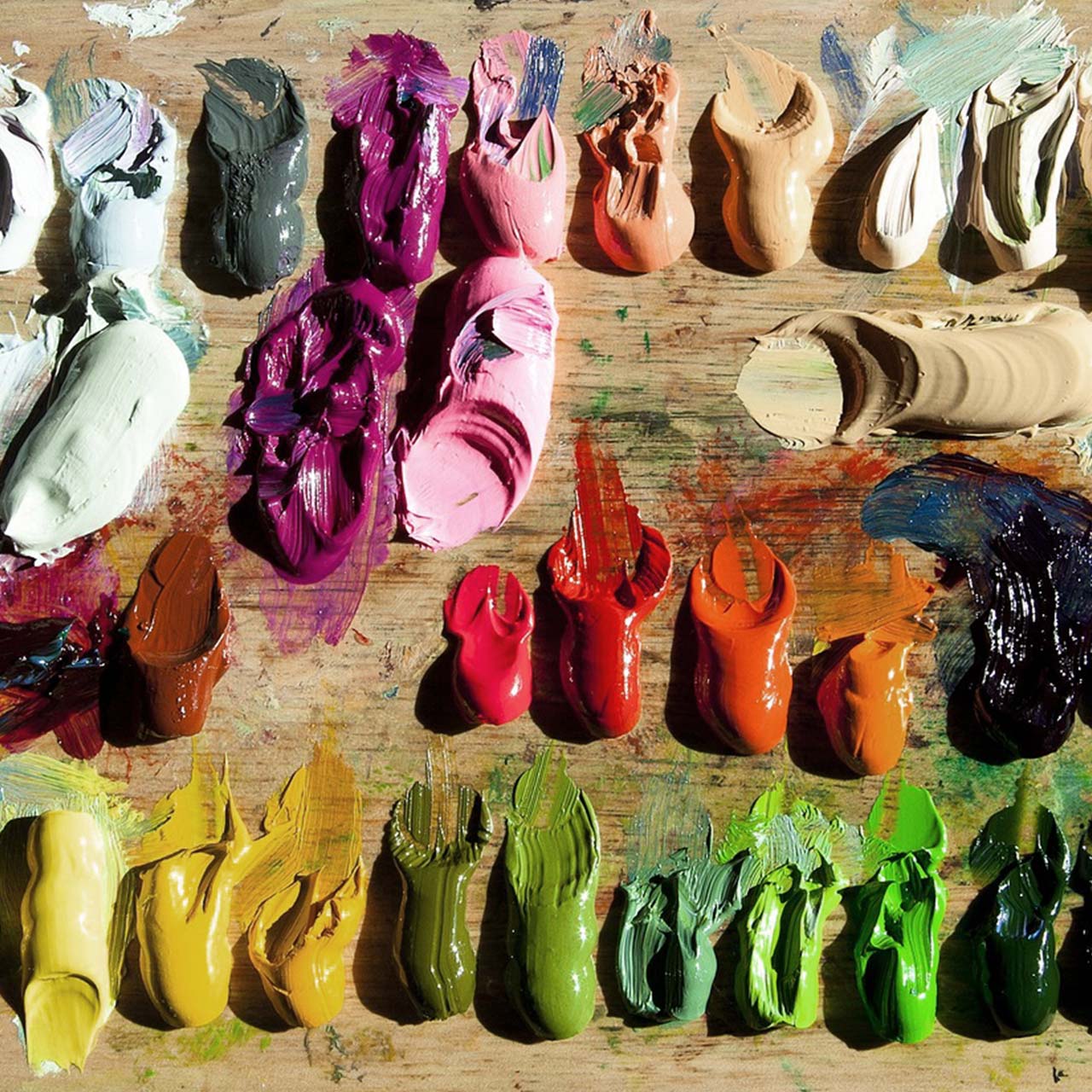Most artists have mixed paint colours on a palette since pre-school, but to take mixing colours to the next level, you'll need to see it as both an art and a science. It requires a basic understanding of colour theory, pigment properties and the interaction of light and materials.
At its core, colour mixing involves combining different pigments to create new hues, tones, and shades, allowing you to achieve the desired effect. The process begins with the primary colours of red, blue, and yellow, which of course cannot be created by mixing other colours, but can be combined to produce a vast array of secondary and tertiary colours.
A 'colour wheel' is an essential tool for effective mixing. Invented in 1666 by Sir Isaac Newton no less, it's a circular diagram that shows the relationships between primary, secondary, and tertiary colours.
Secondary colours are created by mixing two primary colours: red and yellow make orange, blue and yellow make green, and red and blue make purple. Tertiary colours are made from mixing a primary colour with a secondary colour, such as red-orange or blue-green. We're sure you know this already, but a systematic approach can really help you predict the outcomes of your colour mixes.
Luckily we do stock Artists Colour Wheels from Loxley, essential to experimenting with colour theory.
Was £11.70. Now £9.25. View offer here
One key aspect of mixing paints is understanding complementary colours, which are opposite each other on the colour wheel. When mixed together these complementary colours neutralise each other, creating a brown or grey hue. It's a useful principle for artists looking to mute a colour, or create more naturalistic tones. For example, adding a small amount of green to red can dull its intensity, producing a more subdued and realistic red.
Here comes the science bit... as the science of light and colour perception plays a crucial role in colour mixing. For the human eye, colours are perceived based on how different wavelengths of light are reflected - or absorbed - by a surface. When mixing paints, artists are essentially mixing pigments, which absorb certain wavelengths and reflect others.
For instance, a blue pigment absorbs most wavelengths except for blue, which it then reflects. Mixing blue with yellow, which reflects yellow light, results in green because the combination of pigments reflects wavelengths that our eyes interpret as green.
Purple is an interesting case in colour theory, as scientifically... purple is not a colour. It doesn't actually exist in the visible spectrum of light like red, green, or blue. Instead, purple is a combination of the start of light wavelengths (red) and the end (blue). You cannot find purple in a rainbow. This is why purple cannot be created by a single wavelength of light and is considered a non-spectral colour. Your brain is actually creating the colour perceptually.
When mixing paints, purple is achieved by combining red and blue pigments, but this mixture is the result of subtractive colour mixing, where pigments absorb some wavelengths and reflect others. It just shows that to get the best out of your colours, it helps to have a bit of science knowledge in your pocket.
When it comes to paint pigments, mixing them to create different hues requires a deep understanding of pigment properties. Pigments can be opaque, transparent, or somewhere in between. Transparent pigments allow some light to pass through and mix with other layers, creating a different effect than opaque pigments, which cover the layers beneath them. You can exploit these properties to achieve your desired luminosity and depth in your work.
Another thing to keep in mind is 'tinting' strength. Some pigments are very strong and can easily overpower others, e.g. Phthalo Blue is known for its high tinting strength, meaning only a small amount is needed to alter the colour of a mixture significantly. Don't waste your paints when only a small amount is needed.
We often refer to cool (blue-green) or hot (red-yellow) colours. The temperature of colours also influences mixing. Mixing cool and warm colours can create balance and harmony in a painting. For example, adding a touch of a cool blue to a warm yellow can create a more interesting green. This interplay of warm and cool tones adds depth and dimension to your work.
Experimentation and practice are crucial in mastering color mixing, to see how colours interact. Each pigment has unique characteristics, so by experimenting with different ratios, layering techniques, and mixing methods, you'll start to uncover your favoured palette – and the process to create it.
It's not just about paint. Your chosen surfaces will impact on everything mentioned above. For example a matte surface might dull colours, removing colour saturation as matte absorbs more light. An off-white or cream watercolour paper will add yellow to the whole process even after you've mixed your colours.
In conclusion, mixing paint colours is a process that combines your artistic intuition with scientific knowledge. By understanding the principles of colour theory, pigment properties, and light interaction, you can create a limitless range of colours, adding depth, emotion, and realism to your work.
View our ranges of colour wheels, paints and palettes here:
Colour Wheels
Acrylic Paint
Watercolour Paint
Oil Paint
Gouache Paint
Palettes










